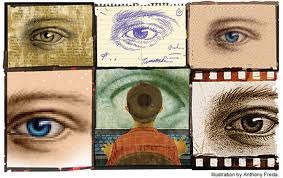How to become a transmedia designer for your brand
 Monday, May 13, 2013 at 2:22 PM by
Monday, May 13, 2013 at 2:22 PM by  Nick DeMartino
Nick DeMartino The following post was commissioned the International Association of Business Communications (IABC) for their May 2013 issue of Communications World, exploring different aspects of transmedia with other articles by Andrea Phillips, Allison Norrington, and many others.
The more the audience can participate in your storyworld, the greater their emotional connection.
By now you’ve heard the buzz about transmedia storytelling, right? Stories that reach fans across multiple delivery platforms, like those created by the big entertainment franchises (Star Wars, Batman, Glee, American Idol, Halo, Harry Potter and more).
Or the big consumer brands, whose inventive story-centric experiences have deepened customer engagement (like Coca-Cola, Audi, Old Spice, Mattel, Wrigley and Levi’s).
Or a new class of independent experience designers who are pioneering this art form with more imagination than money. They are tapping into the power of new digital platforms, devices and social media.
All of which is leading many marketers to believe that transmedia storytelling is the future of brand building and consumer engagement. By using these new techniques, marketers expand their brand campaigns across various media, reach new audiences, deepen engagement, and delight in the story and its messages.
 Henry Jenkins, a professor at the University of Southern California who first popularized transmedia, offers provides the definitive definition: “Transmedia storytelling represents a process where integral elements of a fiction get dispersed systematically across multiple delivery channels for the purpose of creating a unified and coordinated entertainment experience. Ideally, each medium makes it own unique contribution to the unfolding of the story.”
Henry Jenkins, a professor at the University of Southern California who first popularized transmedia, offers provides the definitive definition: “Transmedia storytelling represents a process where integral elements of a fiction get dispersed systematically across multiple delivery channels for the purpose of creating a unified and coordinated entertainment experience. Ideally, each medium makes it own unique contribution to the unfolding of the story.”
More than just a technique to propagate a brand or message (integrated marketing), transmedia storytelling uses narrative devices like character, plot, themes, tone and emotional engagement to create a complete experience.
In other words, a story.
“The reason that we keep saying that traditional marketing approaches no longer work is that the social web has created a new consumer psychology,” writes says media psychologist Pamela Rutledge. “Consumers expect you to earn their attention, not interrupt them for it.

